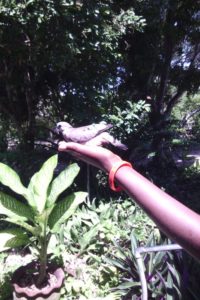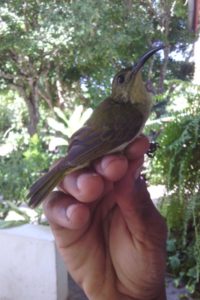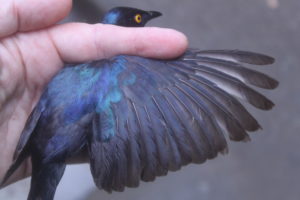NOW THAT I KNOW
Growing up, my friends and I always sought out fun activities to keep us busy during the weekends and holidays. One of those activities was catching birds. It was not for any studies or caging that we caught these birds. Rather, it was to enjoy some bird meat. It didn’t matter how big or small the bird was so long as it got into our trap. Our trap(just a box,thread,some cereals or grains and a stick)was hand made and very easy to use. All we had to do was to wait for a bird to come, eat the bait, pull the string and there! We had our bird.
I came to A Rocha Kenya down in Watamu and saw something similar(bird ringing) though the technique and the reason for catching was very different from ours. When bird ringing, one has to first catch a few birds. Then, once caught, one must place a lightweight uniquely numbered metal ring on its leg in order for it to be tracked and monitored in the future. Then the tarsus, wing, and beak are measured, and the bird is weighed. After this, the bird is then released. This method has continually proved to be a reliable and harmless way of identifying and understanding the biology birds.

Emerald-spotted wood dove being released

An Olive sunbird
I have had a chance of participating in two bird ringing sessions. In our previous session we caught 14 birds, 11 of which were Black-bellied starlings, an Olive sun bird and an Emerald-spotted wood dove. The black bellied sterling is an exceptionally fascinating bird. It is able to change its eye colour when it is stressed. One eye turns red and the other remains yellow.An adult black bellied sterling has either red or yellow eyes, yet to see its eyes change like that was just amazing.

Looking for wing moult on a black-bellied starling
While I do enjoy listening to what the birds have to say, I don’t just listen but I also take part in nature walks to help identify different birds for conservation purposes. What kind of birds are found around your area?
